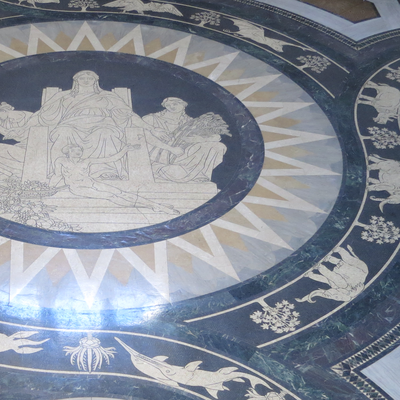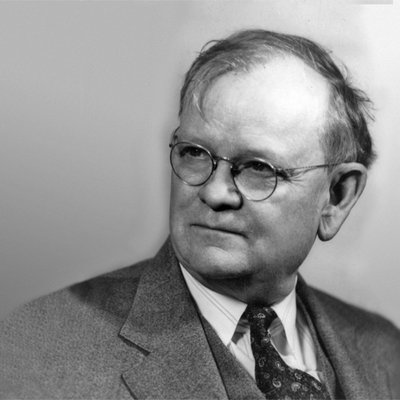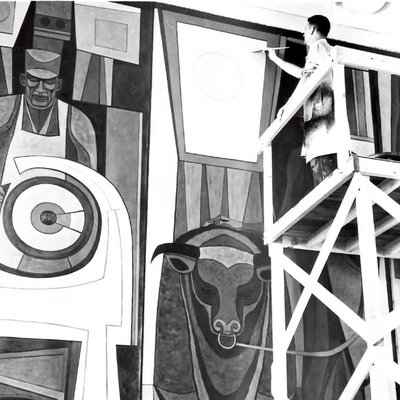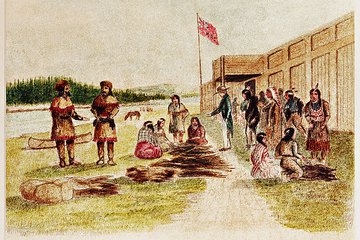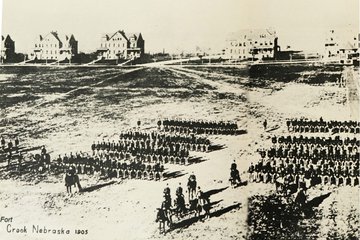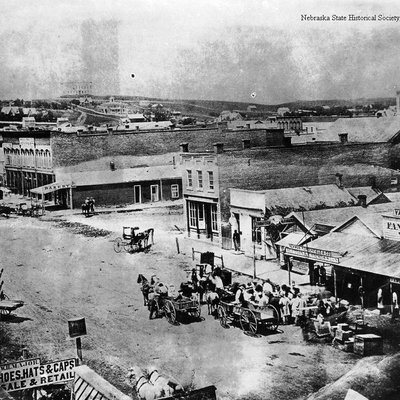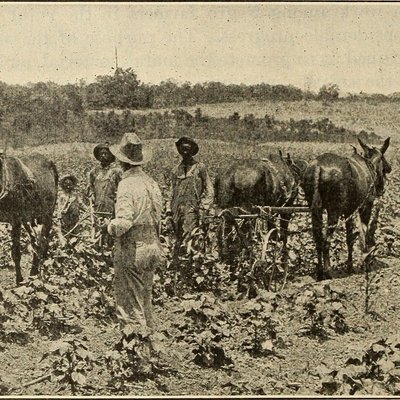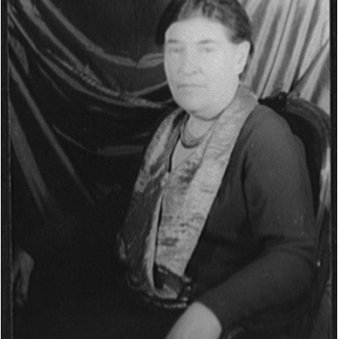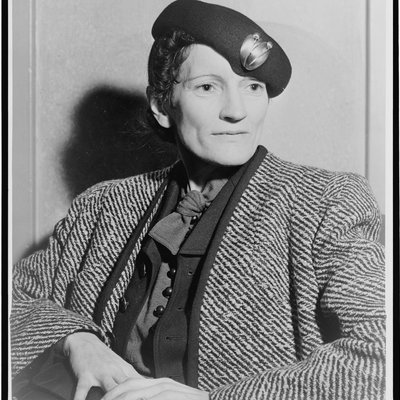CH 8
Rotunda
Nebraska's Resources
Lesson 2 - Laboring in Nebraska

These murals portray the laborsLabor refers to a task, job or work assignment of human life. The mural "Labors of the Hand" shows industrialhaving to do with manufacturing a product works. "Labors of the Heart" depicts humanitarianhaving to do with helping people by getting rid of pain and suffering works. "Labors of the Head" has intellectualmental or involving use of the mind works as its subject. (Reset image)
You find these murals right in the heart of this building. The governor comes here to the Rotunda for celebrations and special events. The public and the senators pass through here to get to the legislative chamber. Supreme Court justices can walk by on their way to the Supreme Court Chamber. And these working folks are here to remind everybody of one of Nebraska's most important resources-- people. People have lived in Nebraska for over twelve thousand years!
Hildreth Meiere, the mosaic artist, put the Mother Earth floor panel showing a human family right at the center of the Rotunda floor, to signify that human life exists with all the foundations of life depicted in the rest of the rotunda floor.
Kenneth Evett, a professor of art, won the competition to paint the murals. He painted them on canvas in his studio in New York state. He used an abstract style. Things look flat and geometric-- you can see circles, squares, and other shapes.
These murals fit the artistic taste of his time, but Evett's murals also blend in with the Capitol's architecture and floor mosaics. For Evett, it was a project that really used his head, hand, and heart.
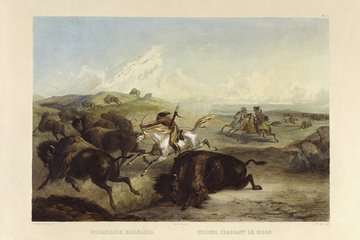
The Native Americans, the first people who lived here, hunted and fished, and eventually grew crops and farmed.
Some of the immigrants had lived in the eastern United States. Others came from Europe. Others brought along cultural ideas about the value of work and the importance of independence.
Eventually towns and cities developed; schools, colleges and universities were founded; and performing artists arrived in Nebraska in opera houses and other places.
Nebraska life inspired writers like Willa Cather and Mari Sandoz.
The arts are alive in Nebraska’s schools, galleries, sculpture gardens, theatres, music halls, and studios. Writers like Nebraska’s official State Poet, Twyla M. Hansen, are still inspired by life here.
To learn more about Twyla Hansen see "New Nebraska state poet not afraid to get dirty" and the state poet ceremony video.

Nebraska would be a very different state if only hunters lived here -- or if only farmers settled the land. Each group that came here brought a different set of skills, as well as a different set of needs that others could work to meet.
By the 21st century, farmers were no longer the majority in Nebraska. Agriculture was still important, but other kinds of work also helped Nebraska's economy. New techniques for both agriculture and other industries were being explored at the state's colleges and universities. Telecommunications and technology, manufacturing, retail, and even education itself had become important forces in Nebraska’s economy.
http://netnebraska.org/interactive-multimedia/news/twyla-hansen-state-poet-ceremony
Sources: http://humanitiesnebraska.org/program/nebraska-state-poet/
SOMETHING TO THINK ABOUT . . .
What kind of labor interests you-- labor of the head, of the heart, or of the hands?Describe labor that uses head, heart, AND hands.
